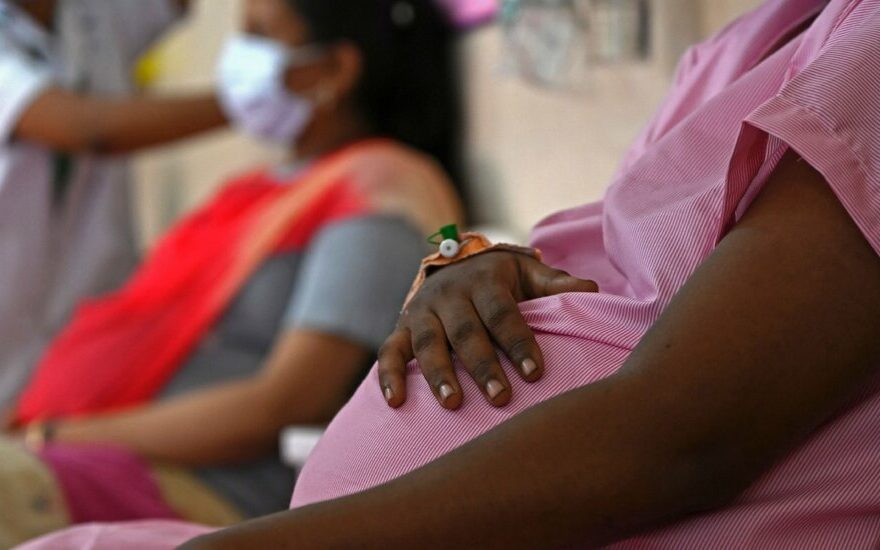On Tuesday, an autopsy report shared with The New York Times showed that the Olympic sprinter Tori Bowie, who was found dead in May, was eight months pregnant and in labor at the time of her death. She was 32 years old. The report identified complications of childbirth as the cause of death, listing eclampsia and respiratory distress as possible factors.
“Eclampsia occurs in somewhere between one to 10 in 10,000 pregnancies,” said Dr. Joanne Stone, the head of the department of obstetrics, gynecology and reproductive science at the Icahn School of Medicine at Mount Sinai. Research has suggested that rates of hypertensive disorders of pregnancy — including pre-eclampsia, eclampsia and gestational hypertension — have been on the rise, and increased during the Covid-19 pandemic.
What is eclampsia?
Eclampsia is when a pregnant woman develops seizures as a result of severe hypertension, said Dr. Monica Longo, a medical officer in the pregnancy and perinatology branch of the Eunice Kennedy Shriver National Institute of Child Health and Human Development, which is associated with the National Institutes of Health.
It can be diagnosed before, during and up to six weeks after labor. Some researchers think the seizures might be caused by the blood vessels in the brain becoming unable to automatically regulate blood flow, Dr. Stone said, but that has not been well established. There can be other causes of seizures during pregnancy, but it’s considered eclampsia “until proven otherwise” through lab tests, including neurological tests, Dr. Longo said.
Pre-eclampsia can be a precursor to eclampsia but not always, Dr. Stone said.
Pre-eclampsia consists of severe hypertension during pregnancy, with an elevated blood-pressure reading (a top number of 140 or higher, or a bottom number of 90 or higher) and it’s usually accompanied by protein in the urine. While the cause remains unclear, pre-eclampsia is thought to be brought on by dysfunction in the blood vessels of the placenta, which can cause hypertension in the mother. It most often develops after 20 weeks of pregnancy, according to the American College of Obstetricians and Gynecologists.
Both pre-eclampsia and eclampsia can be fatal, accounting for roughly 8 percent of all pregnancy-related deaths from 2008 to 2017, and 11 percent of pregnancy-related deaths of Black mothers in that time frame, according to the Centers for Disease Control and Prevention. The conditions can also lead to health complications later in life, including an increased risk of stroke, heart attacks and kidney disease.
What are the risk factors for developing eclampsia?
Several risk factors are associated with pre-eclampsia and eclampsia, including becoming pregnant over the age of 35 and having a family history of pre-eclampsia as well as diabetes and obesity, Dr. Stone said.
But being Black is one of the strongest predictors of developing these conditions, she said, regardless of socioeconomic status and even overall fitness level. Studies have found that higher incomes do not protect Black mothers from developing pre-eclampsia in the way that they protect white women and, in fact, high income Black women still have a higher risk of developing complications related to pre-eclampsia than low-income white women.
One reason for the disparity is that having chronic hypertension — a condition that is more prevalent among Black women — before pregnancy increases the risk of developing related complications during pregnancy, Dr. Stone said.
What are the symptoms?
While there are several warning signs of pre-eclampsia — including having a headache that doesn’t subside and seeing spots or having blurry vision — eclampsia is more difficult to watch for. According to the American College of Obstetricians and Gynecologists, between 20 and 38 percent of patients with eclampsia do not develop the classic signs of pre-eclampsia before the onset of seizures. When a pregnant woman has seizures, she needs immediate medical attention.
Can you control eclampsia?
Medication can control convulsions in a woman with eclampsia. But, ultimately, the only solution in severe cases of pre-eclampsia and eclampsia is to deliver the fetus, Dr. Longo said. “The moment she develops seizures, there is no more watching,” she said.
“This is a disease of the placenta and unfortunately — for how much scientists have been looking into it — we don’t have a clear understanding of what’s going on,” she said. “So delivery of that placenta is fundamental.”
Alisha Haridasani Gupta is a reporter on the Well desk, focused on women’s health, health inequities and trends in functional medicine and wellness. Previously, she wrote the In Her Words newsletter, covering politics, business, technology, health and culture through the gender lens. @alisha__g
Source: Read Full Article
